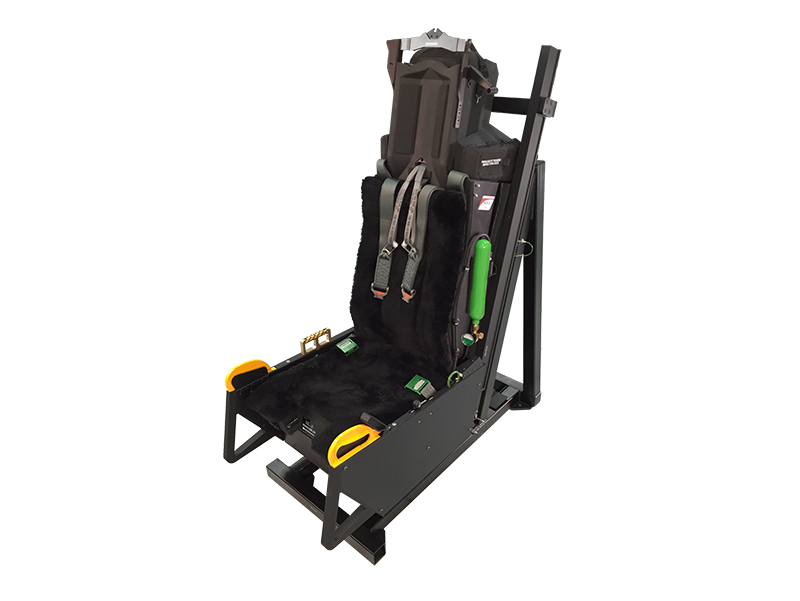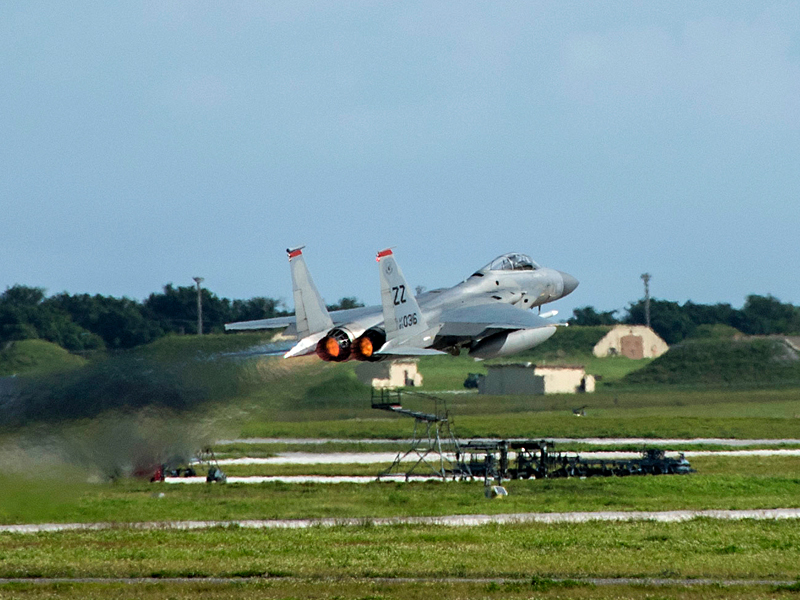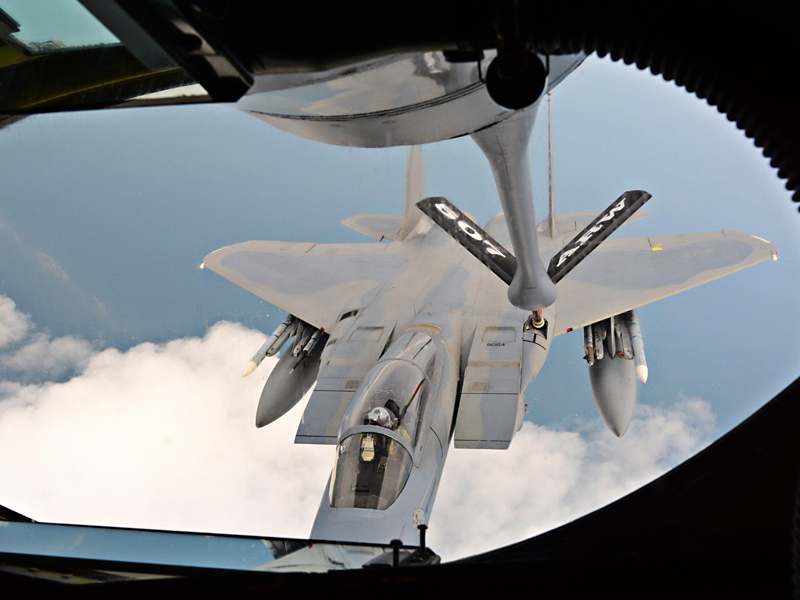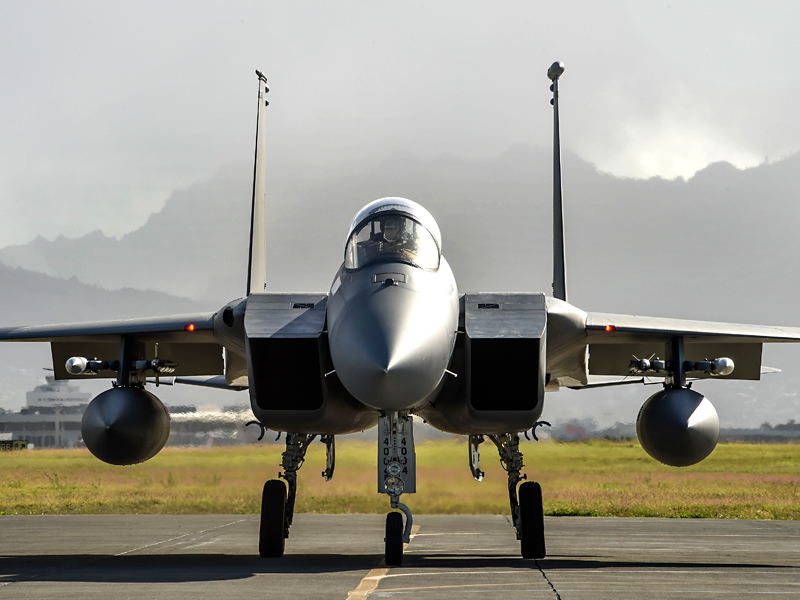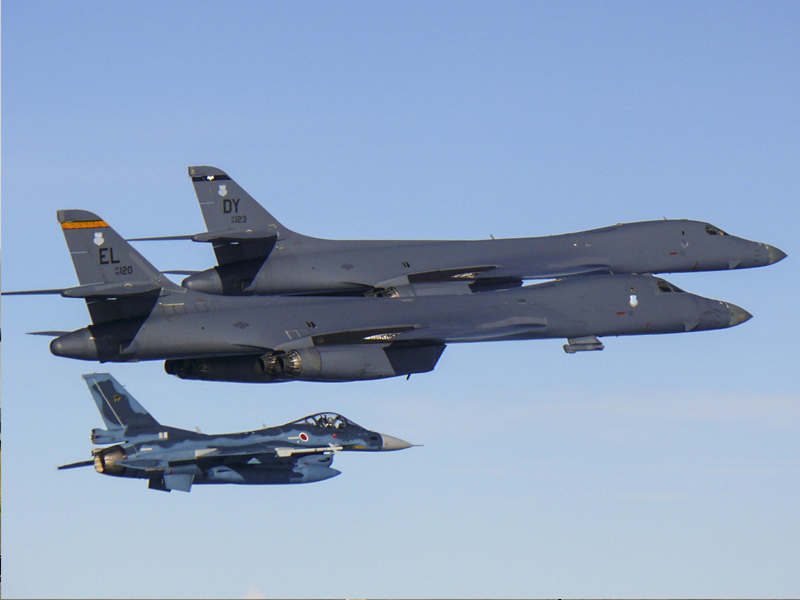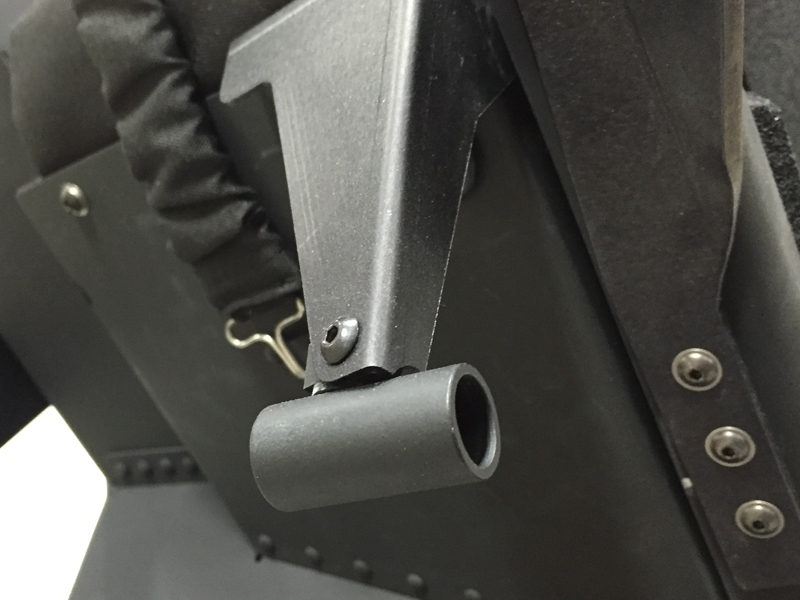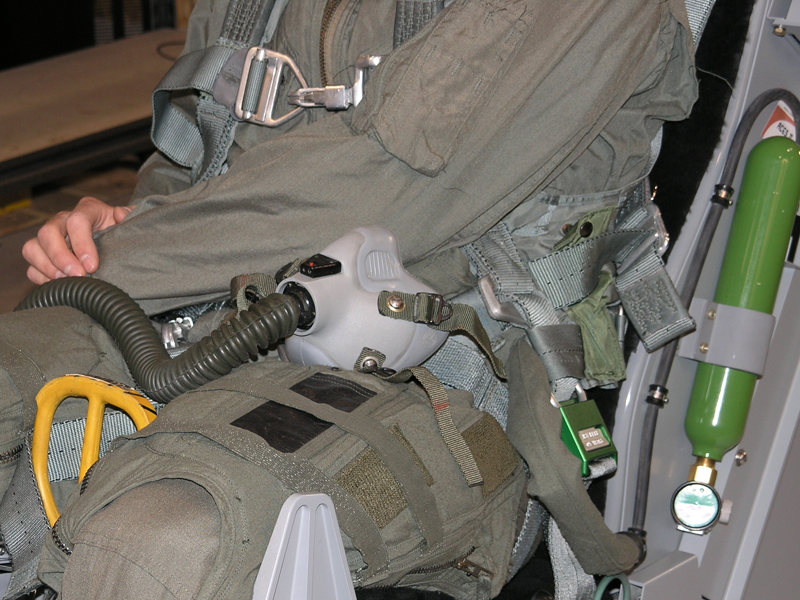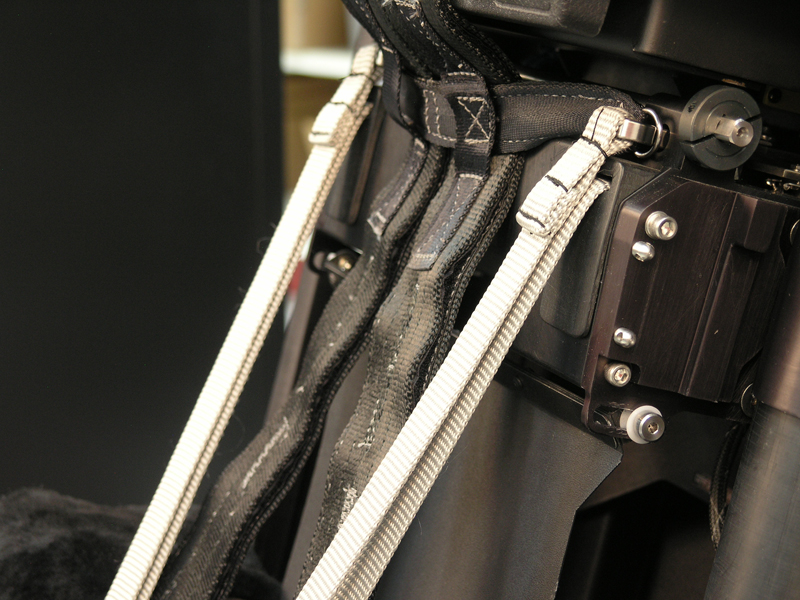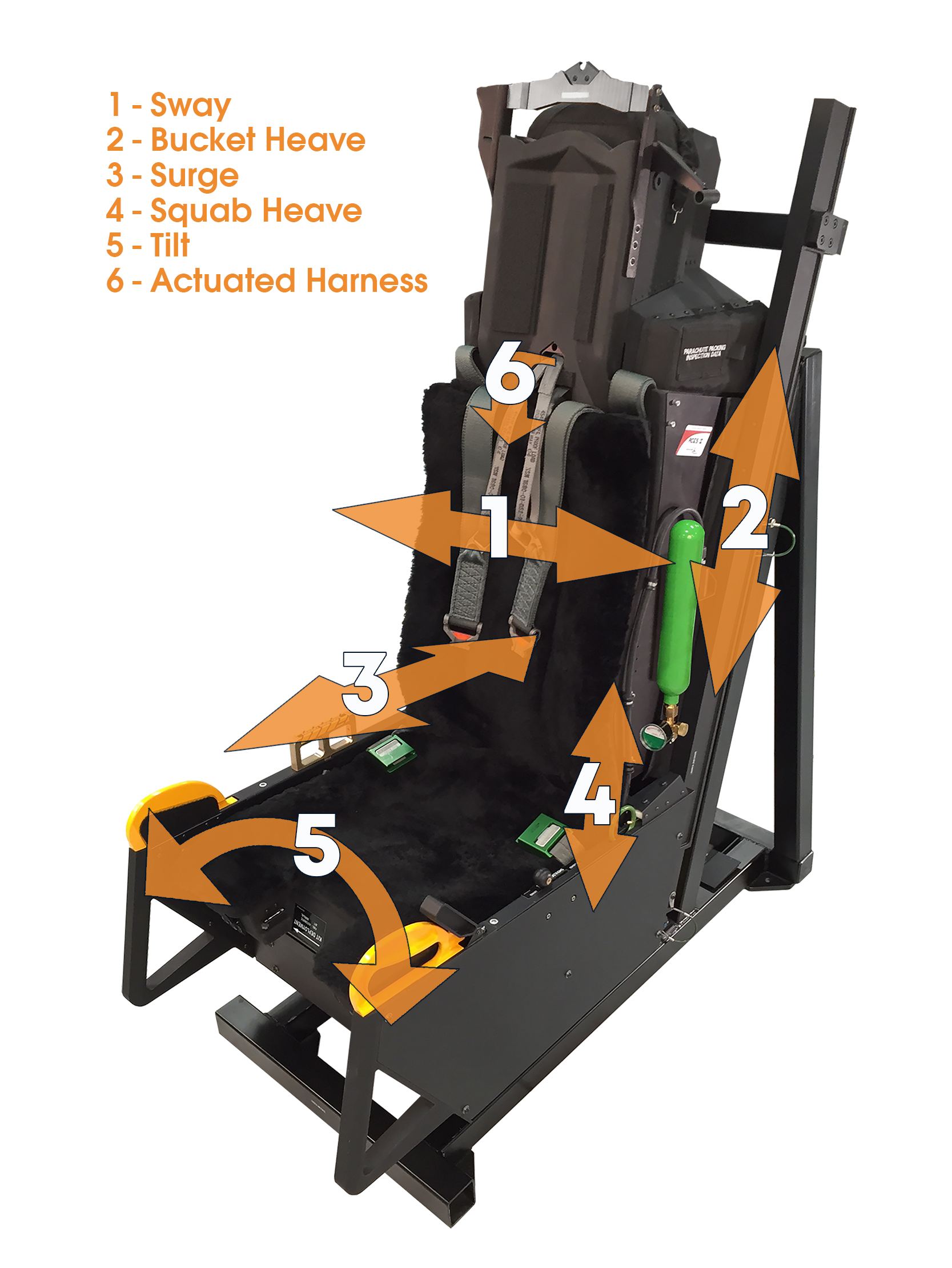ACME Dynamic Motion Seats
The ACME F-15 ACES II Dynamic Motion Seat
ACME’s F-15 Dynamic Motion Seat is a high-fidelity replica of the ACES II ejection seat specialized for the F-15 body. It looks and feels just like the actual seat and mounts in the simulator just like the ejection seat too. It features ACME’s patented full motion cueing system inside the seat and includes actuated shoulder harnesses and powered seat-height adjustments.
The small details are critical for realism and training capability. Everything the crew touches on the replica seat is like it is in the aircraft including levers, handles, cushions, harnesses, buckles. ACME even mimics the subtle but important distinctions like the difference in the canopy breakers atop the seat between the pilot and the weapon system operator seats.
ACME includes a range of special features on the F-15 motion seat. For example, the seat includes the emergency beacon transponder and rescue kit deployment switches. The shoulder harnesses can include the specialized SEAWARS buckles. The seats internal sensors report the state of the seat levers and controls to the instructor too.
With the realistic motion cues and the precise fidelity details, crews can use the seat for flying cues and as a cockpit and egress training device.
F-15 Fighter Facts
The McDonnell Douglas (now Boeing) F-15 Eagle is an American twin-engine, all-weather tactical fighter designed by McDonnell Douglas to gain and maintain air superiority in aerial combat. It is among the most successful modern fighters, with over 100 aerial combat victories. Following reviews of proposals, the United States Air Force selected McDonnell Douglas’ design in 1967 to meet the service’s need for a dedicated air superiority fighter. The Eagle first flew in July 1972, and entered service in 1976.
The Eagle has since been exported to Israel, Japan, and Saudi Arabia, among other nations. The F-15 was originally envisioned as a pure air superiority aircraft. Its design included a secondary ground-attack capability that was largely unused. The design proved flexible enough that an all-weather strike derivative, the F-15E Strike Eagle, was later developed, entering service in 1989. The F-15 Eagle is expected to be in service with the U.S. Air Force past 2025. Newer models are still being produced for foreign users. The F-15 production line is set to end in 2019, 47 years after the type’s first flight.
ACME Dynamic Motion Seats Fighter Type Details Images
ACME F-15 ACES II Dynamic Motion Seat
- Dynamic Motion Seat (DMS)
- Electronics Chassis
- DMS Computer System (Can drive 2 Electronic Chassis and 2 Seats)
- Connecting Cables
- DMS Maintenance Manuals
- Daily Operational Readiness Test (DORT) Software
- Vertical seat adjustments
- Electric motors eliminates expensive hydraulics and maintenance intensive pneumatic systems
- Easy access to system components for maintenance and tuning
- Standard Safety Switches/Systems: Weight on Seat / Loss of Signal at DMS Computer / Crew Enable / Self Monitoring System
ROLE – Air Superiority Fighter
NATIONAL ORIGIN – United States
MANUFACTURER – McDonnell Douglas / Boeing Defense Space & Security
INTRODUCTION – 9 January 1976
PRIMARY USERS – States Air Force / Japan Air Self-Defense Force / Royal Saudi Air Force / Israeli Air Force


